The AKC Dalmatian Standard reads -
Feet have generally been good in Midwest Dalmatians, but at a recent Dal Specialty many of us noticed a large number of poor feet in the entry. Did this sneak up on us and we just didn't notice what was happening, or is this a recent thing? The dogs with the poor feet represented a variety of bloodlines, so it could not be attributed to the influence of one popular sire with poor feet, or a single breeder whose line needed improvement in that area. Whatever the reason, it was very obvious as well as very disturbing.Feet are very important. Both front and rear feet are round and compact with thick, elastic pads and well arched toes. Flat feet are a major fault. Toenails are black and/or white in black- spotted dogs and brown and/or white in liver- spotted dogs. Dewclaws may be removed.
Typical Dalmatian problems include high/hooked tails, too much size, too much color (this is a spotted breed, not a blotched one) - all very much evident in the entry, poor top lines, bad fronts, far too much variation in type, and poor temperaments (shyness and occasionally aggression). But feet have never been a real problem in the Midwest. We normally see an occasional dog with poor feet, but never very many, even in large shows. Are breeders getting careless about feet, or do the newer breeders/exhibitors not understand the importance of good feet?
Both front and rear feet are round and compact with thick, elastic pads and well arched toes. Flat feet are a major fault.
Because Dalmatians are "road dogs" they require feet that can hold up to many hours of trotting over rough surfaces. The standard describes the proper foot for that job. Sporting breeds require good feet for exactly the same reason.
Foot faults include long toes, thin pads, splayed toes, and a lack of arch. We also noticed several dogs standing on the backs of their rear pads, rather than standing well up on their toes, again a fault, but this one generally tied to excessive angulation and sickle hocks (a discussion for another day).
Good feet "don't just happen" but must be bred for, just as we breed for good markings, proper temperaments, and sound movement. Without good feet, a Dalmatian can not be a sound dog.









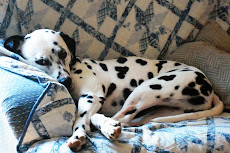







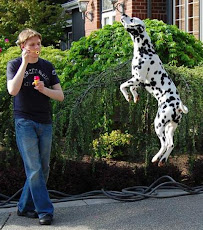

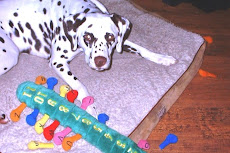

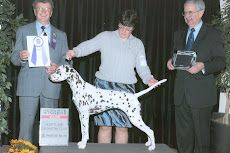
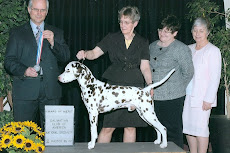


























1 comment:
I've been noticing bad feet in a lot of breeds lately -- and I too was wondering when that happened. Long toes, pancake flat feet, splayed toes, and overall ugly looking feet.
Post a Comment